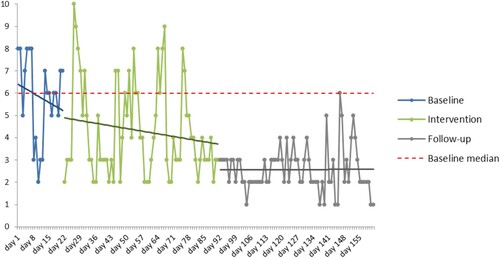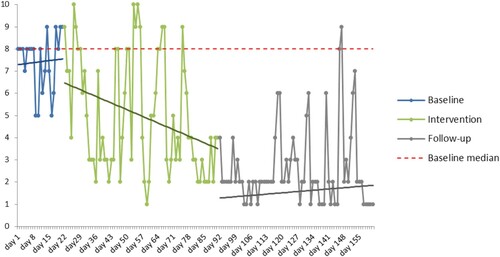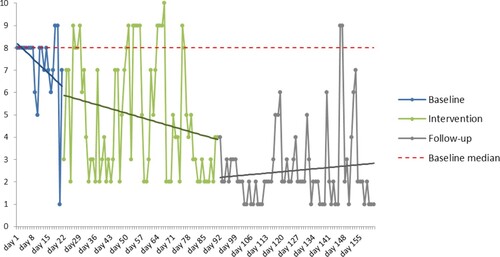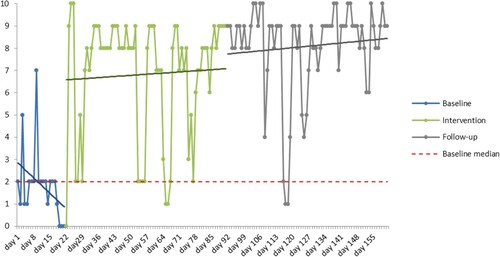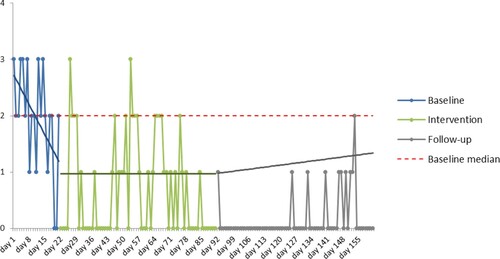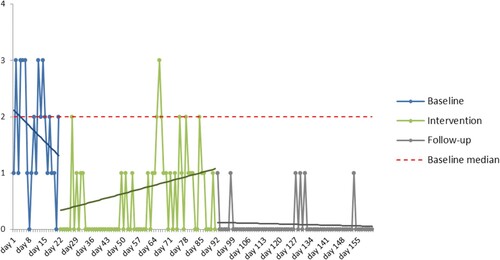Figures & data
Table 1. Grand phase summaries of the idiographic measures.
Table 2. Summary of study phase comparisons.
Table 3. PND and PEM non-overlapping data analysis results.
Table 4. Nomothetic outcomes with clinical and reliable change analyses.
Table 5. Summary of changes noted in the change interview and associated ratings.

